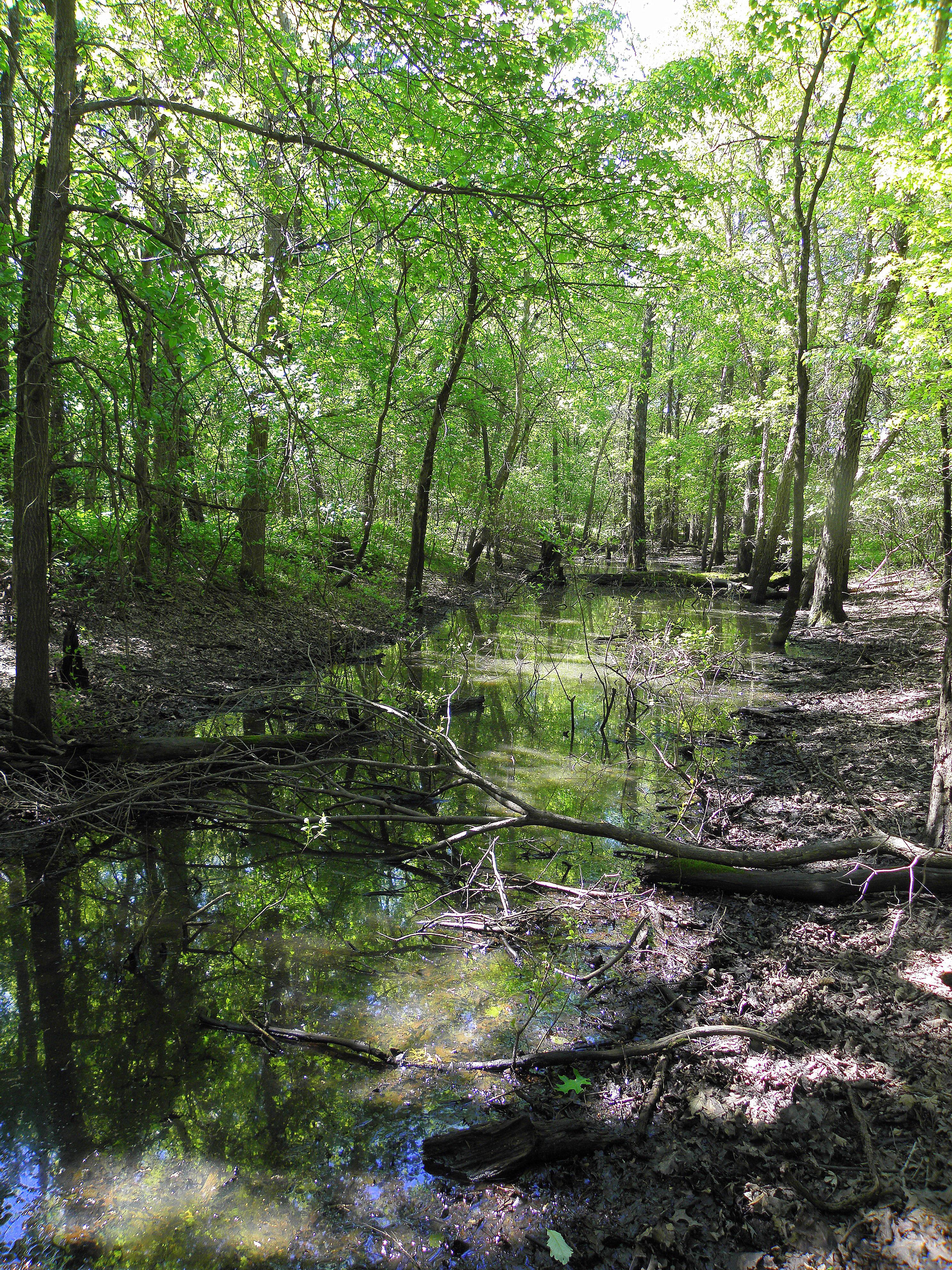
The Mississippi Alluvial Plain sits beside the eastern edge of the Southern Iowa Drift Plain and represents the broad lowlands of the Mississippi River. It was formed from glacial meltwater from tens to hundreds of thousands of years ago, when rivers carved valleys and partially filled them with layered deposits of gravel, sand, silt, and clay. Parts of this region, like Big Sand Mounds Nature Preserve in Louisa County, contain areas of deep sandy deposits that were created by flowing streams and strong blowing winds. While the Mississippi River forms the east boundary, lower portions of the Cedar and Iowa rivers are the two main watersheds that flow through this region and continue to influence landscape water levels and vegetation. While this region historically primarily was floodplain forest, the local hydrology has been severely changed through drainage of inland tributaries and wetlands and by the establishment of the lock-and-dam system of the Mississippi River. Row-crop agriculture is now predominant on most of the floodplain. Wooded areas remaining are largely confined to corridors adjacent to streams and rivers and on upland areas, such as those containing sedimentary rock outcroppings that remain from a much earlier period of time. Especially in the sandy uplands, a few native prairie remnants (like Shield Prairie) survive in this region, as well.
Fortunately, many sizable publicly-owned wetland complexes are in place along all three rivers. Port Louisa National Wildlife Refuge, Lake Odessa, Wiese Slough, Cone Marsh, Red Cedar Wildlife Area, Saulsbury Bridge Recreation Area, and Blackhawk Bottoms all are good examples of areas that provide excellent bird habitat. Rarer bottomland forest and riparian corridor birds that nest here include Red-shouldered Hawk, Yellow-crowned Night-Heron, Black-billed Cuckoo, and Brown Creeper; and some of the highest nesting densities of Bald Eagle in the state occur in these bottomlands. All Iowa nesting woodpeckers and vireos occur here, and the vast majority of Eurasian Tree Sparrows that nest in the state are found in this region. There also exists a growing population of Blue Grosbeaks and Sandhill Cranes. Especially in northern portions of this region, American Bittern, Least Bittern, King Rail, Virginia Rail, Sora, and Common Gallinule all are found during the nesting season.